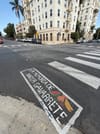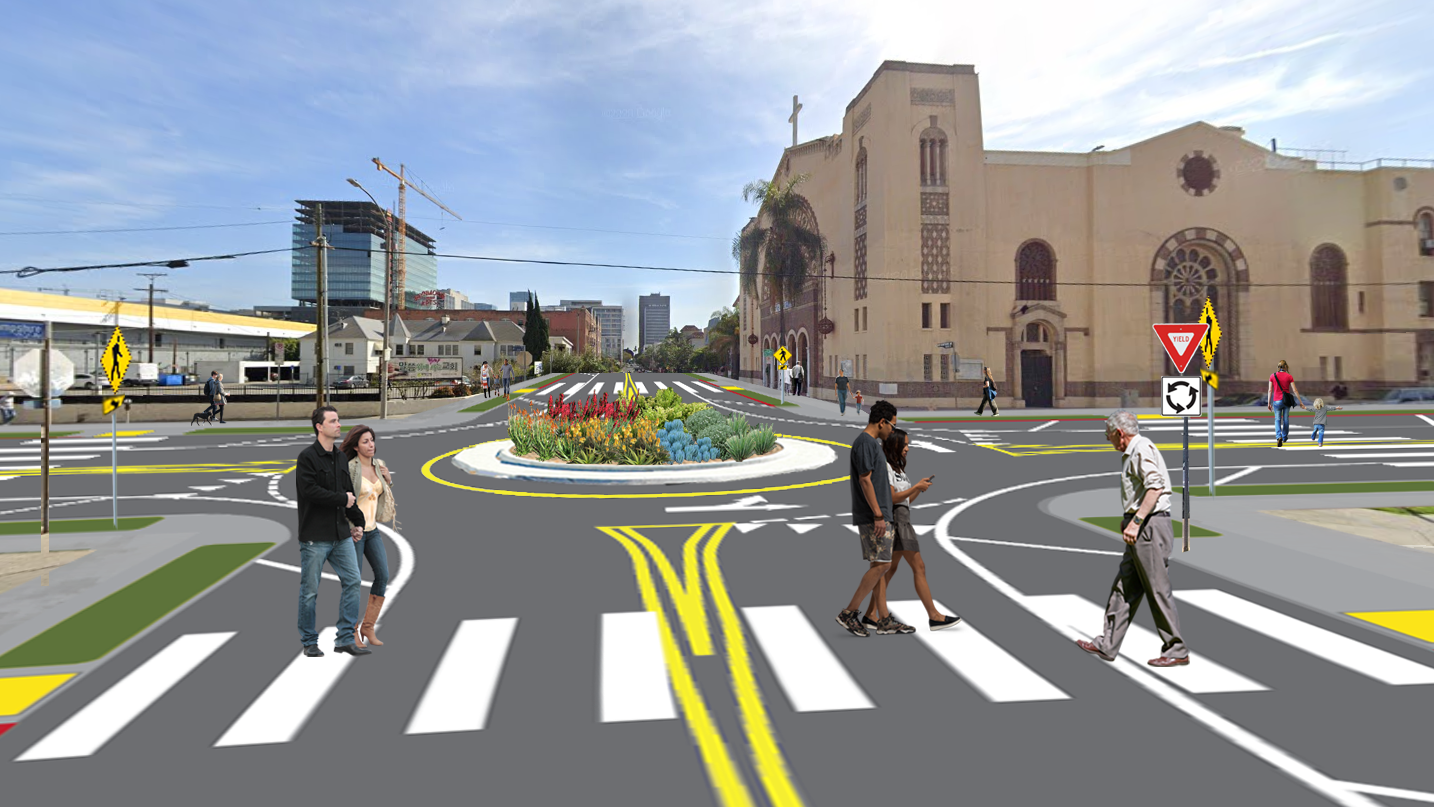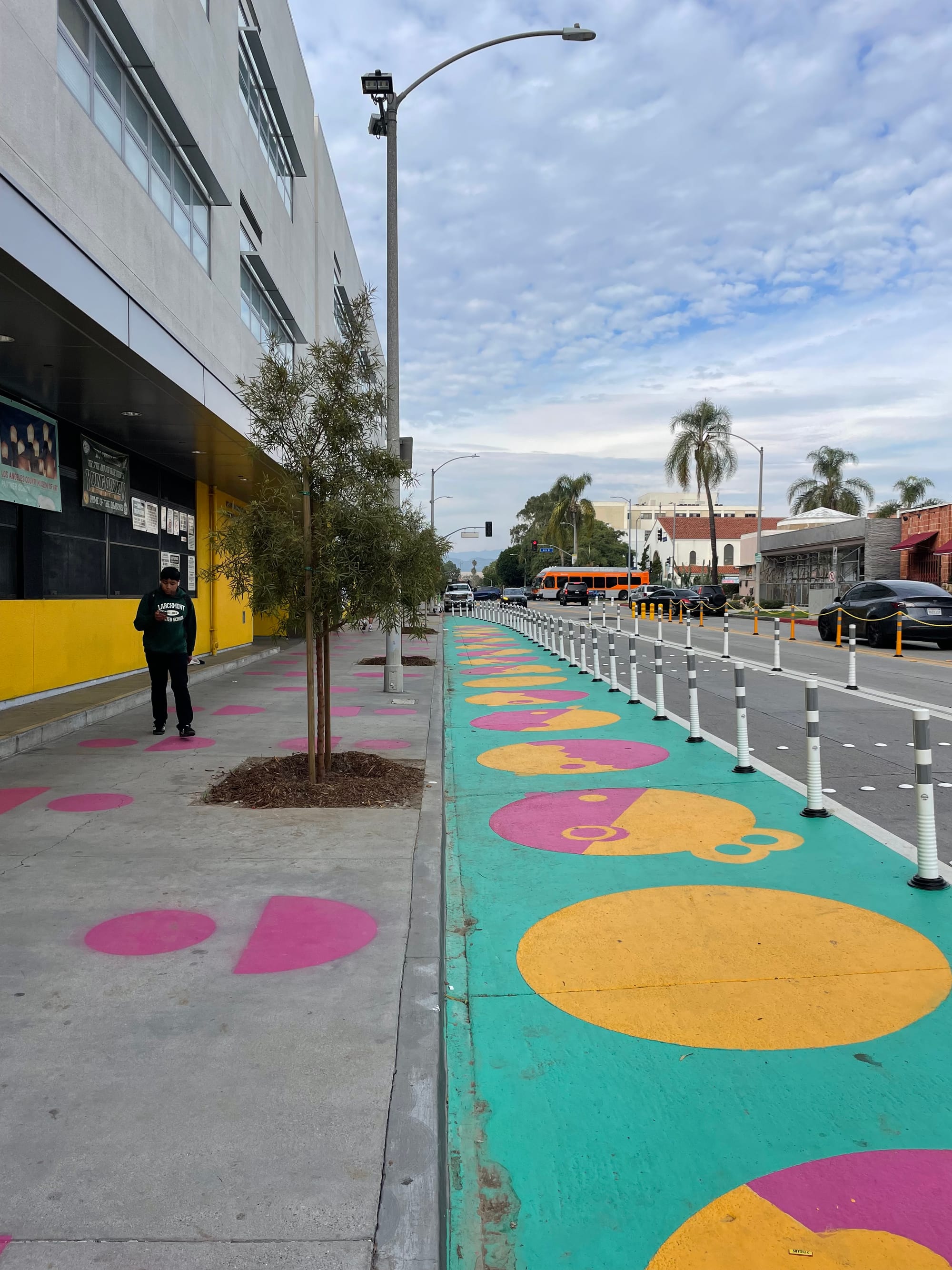A force of nature
When institutions threw up constraints, Melanie Winter's tenacity surged — just like the river she championed
Walking back the "car-free" games promise is unconscionable in a city where the people who don't drive are also the most vulnerable users of our streets

In 2018, I wrote a story about sidewalks where I estimated that one-third of the U.S. population does not drive. In the weeks after my story published, I was challenged — even by people who don't themselves drive! — saying this figure could not possibly be correct. But it's absolutely true, and the data has recently been backed up by a comprehensive NRDC report which claims 36 percent of Americans over the age of 10 "do not or cannot rely on a personal vehicle to meet their daily travel needs." This is also the central argument of When Driving Is Not an Option: Steering Away from Car Dependency by Anna Zivarts, a low-vision parent, nondriver, and interim advocacy co-director at Disability Rights Washington, who started the national Week Without Driving, which concluded yesterday. As she told me last year: "This is a window into that experience, having it be focused on the existence of nondrivers and the possibility for us to build communities that can work for everyone, including people who can't drive."
I've thought a lot about that statistic over the past year, especially now that the "car-free" games (RIP) have officially morphed into the "transit-first" games. Contrary to what local elected officials would have you believe, NRDC shows LA nondriver rates that are higher than you might think; in LA's 34th congressional district, 14.7 percent of households are completely car-free. [Update: It happened again, with people messaging me after I published this story to tell me there's NO WAY this data could be true for LA. I encourage deniers to really dig into the study!] And what was so beautifully poetic about envisioning a car-free Los Angeles, even for a few weeks, was that the phrase insisted on prioritizing the movement of the city's nondrivers — and particularly during LA's first-ever Paralympics. Walking back the "car-free" games promise is unconscionable in a city where the people who don't drive are also the most vulnerable users of our streets.
As I thought about this during the Week Without Driving, I kept coming back to 4th and New Hampshire, the Koreatown intersection where 9-year-old Nadir Gavarrete was killed by a driver on July 31. Like the 4-year-old named Alessa who was killed walking with her mom to a nearby school, Nadir's death hit way too close to home. He died while traveling with his older brother — who was hospitalized after the crash — on a street I that use with my children regularly, close to a local park that I'd hoped my own kids would (soon? someday?) walk to by themselves.
But Nadir's death was particularly infuriating because according to the city's own plans, the intersection where he was killed was supposed to look like this:

Back in the 2010s, LADOT had proposed a very simple roundabout treatment that's extremely effective in slowing cars as part of a major east-west bikeway that travels along 4th Street. Outreach began in 2011, and LADOT had even successfully tested the treatment at a 2019 pop-up event. After Nadir was killed, LADOT told Streetsblog that construction is finally slated to begin next year. Waiting 15 years for a safety improvement seems outrageous, but, sadly, that timeline isn't out of the ordinary for a city that cannot make simple transportation upgrades. And with the approval of the convention center, it's about to get worse, as Councilmember Katy Yaroslavsky warned everyone last month: "If you want to repair the sidewalks that are costing us more than $100 million a year in liability, or build new bike lanes and walkable communities to comply with HLA, there will be absolutely no money left to do it."
(Can we, just for a moment, acknowledge that the $100 million in annual liability payouts is the EXACT SAME AMOUNT we're now paying in annual convention center debt service and just briefly imagine another reality where the mayor held a flashy press conference announcing a $2.6 billion plan to save $100 million a year by repairing all of LA's sidewalks?)
In the days after Nadir's death, the intersection became the focus of the tactical urbanists at LA's Crosswalk Collective who laid down their own safety improvements to highlight how the city had failed its residents for whom driving isn't a choice. "We started painting crosswalks because we couldn’t count on the city to protect us, especially our children and elders," the collective wrote. "Three years later, it’s clear the city of LA still doesn’t value the lives of Angelenos." One of the crosswalk panels was inscribed with Nadir's name, and a few weeks later, a neighbor, artist Mir Cortez-Cáceres, painted fruits in the panel with Nadir's sister — Nadir's family, who are Honduran immigrants, sells fruit at the same intersection.
Three days ago 9-year-old Nadir Gavarrete and his brother were hit by a driver at 4th & New Hampshire in Ktown. Nadir died and his brother is hospitalized. LA city officials are well aware of the dangers of this intersection and have done nothing. Four crosswalks painted at 4th & New Hampshire.
— Crosswalk Collective LA (@crosswalksla.bsky.social) 2025-08-03T16:25:22.228Z
Usually LADOT quickly scrapes away any DIY improvements, but two months later, it's notable that the city hasn't yet buffed out Crosswalk Collective's work. Is a crosswalk enough? No, of course not. But it's definitely an improvement. And in a city with such a severe budget crisis, surely there's a window for shifting transportation policy so advocates and city employees can work together. Even city council candidates are painting their own crosswalks now.
When I stopped by to pay my respects, I was reminded that this stretch of New Hampshire had been designated a "slow street" during the early days of the pandemic. The idea back then was that park-deprived neighborhoods would have certain streets demarcated as safe for walking, biking, or even as places for kids to play. Unfortunately, the only legacy of LA's "slow streets" are a few signs suggesting drivers go 15 miles an hour and sad clusters of smushed plastic bollards. I should also note that as I continued down the so-called "slow street" looking for other infrastructural artifacts, I was almost hit by a driver whipping around the corner.
But a few blocks away there is a good example of what our streets could look like if we actually wanted to make them safer for the one-third of Angelenos who don't drive. On Shatto Place, gridlock outside a middle school required a solution that slowed all cars, designated a lane for dropoffs, and made more room for the hordes of students that flood the block two times a day. LADOT's street reallocation forces vehicles to take a wide arc when turning off busy 6th Street and sorts each mode into predictable movements. This is right outside the Wilshire/Vermont Metro station as well, so there are a ton of people walking and biking to the train at all times of day. Now, with the sidewalk effectively widened — something we pretty much never do in LA — everyone has their own space.

Yes, it's just paint and posts. Of course we can and should do so much more. (I was in San Francisco last month and toured the gold-standard Sanchez Slow Street with former SFMTA director Jeffrey Tumlin; now that's #goals.) But as someone who uses this street at least once a week during its busiest hour to get to the subway myself, I have to say — it works really, really well. This street tells an unmistakable story about who is prioritized here. If the city isn't going to use my idea to copy Paris's school streets as a 2028 legacy, then just give every school a toolkit for doing this type of treatment. Collaborating with students, faculty, and parents — who would then facilitate and maintain the school street — would make hundreds of blocks instantly safer for one-third of the population citywide.
Over in Santa Monica, the city has managed to strike that balance with a Big Blue Bus adopt-a-stop program where volunteers sign up to give a little extra love to their local bus stop in exchange for (some) free rides. It's all part of the bigger Brighter Blue initiative to improve bus service ahead of upcoming megaevents. As LA's service levels degrade — some might say they suck! — I love the idea of bus riders teaming up to assist with much-needed touchups and flag bigger maintenance issues. The difference, of course, is that every bus stop in Santa Monica has some type of seating or shade for riders, while the majority of LA's bus stops do not. But that could help draw attention to the lack of infrastructure; the Bay Area, for example, is currently experiencing a very inspired DIY bus bench-building spree. Also apparently Santa Monica's bus stops are powerwashed three times a week which I am pretty certain is not the level of service that my local urine-spritzed bus shelter has ever received here in the city of LA.
The scale of what LA is really up against when it comes to prioritizing nondrivers was on full display in downtown this past week, where giant emoji-patterned band-aids with QR codes were affixed over the most painful sidewalk gaps. The Boo-Boo Bandage Brigade is a huge coalition convened by Public Matters that's mobilizing to draw attention to the infrastructural "ouchies" that most impact LA's car-free residents.
When it comes to LA's shattered sidewalks, many property owners might think they're helping by laying down asphalt patches, but as the Boo-Boo Bandage Brigade highlighted, in many instances, these DIY fixes are actually making sidewalks more dangerous. Carrie Madden, a systems change advocate at disability advocacy group Communities Actively Living Independent and Free, described having her wheelchair dragged off the sidewalk and into buildings by shoddy repairs. "Just yesterday I went into a planter," she told KTLA.
Madden, who I interviewed last year about LA's park accessibility lawsuit, is still waiting to see the infrastructural results of a sidewalk lawsuit, filed over a decade ago on behalf of LA's nondrivers. "We sued the city to repair these sidewalks," she said. "After about 15 years, we don't see the improvements. In fact, we're seeing even worse conditions." While paint and posts can point the way to safer roadways for nondrivers, only policy is going to repair the sidewalks. Although I'm open to your tactical urbanism ideas for how to install curb ramps! But at this rate, the best LA is going to get by 2028 is a bunch of giant band-aids. 🔥